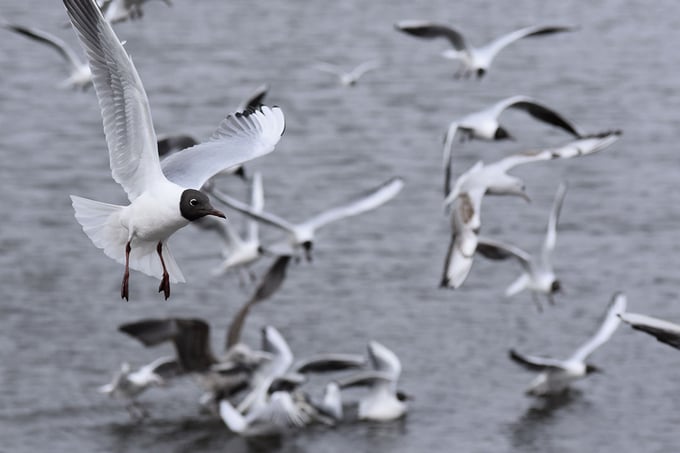November 24, 2025 | 08:05 GMT +7
November 24, 2025 | 08:05 GMT +7
Hotline: 0913.378.918
November 24, 2025 | 08:05 GMT +7
Hotline: 0913.378.918

In wild birds, black-headed gulls continued to be heavily affected by avian influenza. Photo: Matthew Cassidy
These are the main findings from the latest report on avian influenza by the European Food Safety Authority (EFSA), the European Centre for Disease Prevention and Control (ECDC), and the EU Reference Laboratories (EURL), which confirm that the avian influenza situation in Europe is improving and confirms that the risk to the general public remains low.
Between 2 March and 28 April 2023, highly pathogenic avian influenza outbreaks were reported in domestic (106) and wild (610) birds across 24 countries in Europe. Poultry outbreaks occurred less frequently compared to the previous reporting period and compared to spring 2022, notes the report.
Most of these outbreaks were classified as primary outbreaks without secondary spread, and some of them were associated with atypical disease presentation, in particular low mortality.
Gulls and other species more severely affected
In wild birds, black-headed gulls continued to be heavily affected, while other threatened wild bird species, such as the peregrine falcon, also showed increased mortality. The ongoing epidemic in black-headed gulls, many of which breed inland, may increase the risk for poultry, especially in July-August, when first-year birds disperse from the breeding colonies.
Spread to other species
The virus also continued to spread in the Americas, including in mammalian species, and is expected to reach the Antarctic in the near future, notes the report. In the US, 2 cases were reported in cats and 1 case in a dog in Canada.
Avian influenza infections were detected in 6 mammal species, particularly in marine mammals and mustelids, for the first time, while the viruses currently circulating in Europe retain a preferential binding for avian-like receptors.
Human infection
Since 13 March 2022 and as of 10 May 2023, 2 human cases of H5N1 bird flu were reported – 1 from China and the other from Chile – and 3 H9N2 and one H3N8 human infections in China. The risk of infection with the virus strain currently circulating in Europe remains low for the general population in the EU/EEA, said the report, while the risk remains low to moderate for workers and other people in contact with potentially infected diseased and dead birds and mammals.
(PW)

(VAN) In Brazil, FAO unveiled a series of reports and initiatives showing how sustainable agrifood systems are a solution to the climate crisis.

(VAN) With names like neodymium and dysprosium, rare-earth elements sound exotic — and their perceived scarcity has only added to the mystique.

(VAN) In a new study published in Trends in Biotechnology, researchers used a gene-editing technology called CRISPR to increase a fungus's production efficiency and cut its production-related environmental impact by as much as 61%- all without adding any foreign DNA.

(VAN) A top official in Beijing’s Cop delegation says China is committed to clean energy – but US’s absence is a problem.

(VAN) The Bangsamoro region’s inflation rate rose slightly to –1.3 percent in October 2025 from –1.5 percent in September, the Philippine Statistics Authority (PSA-BARMM) reported.

(VAN) FAO-led report says protecting and restoring forests is crucial to boosting climate-resilient agriculture, rural livelihoods and global food and water security.

(VAN) Flagship partnership secures additional GBP 16.9 million to strengthen forest monitoring, transparency and country support to 2030.